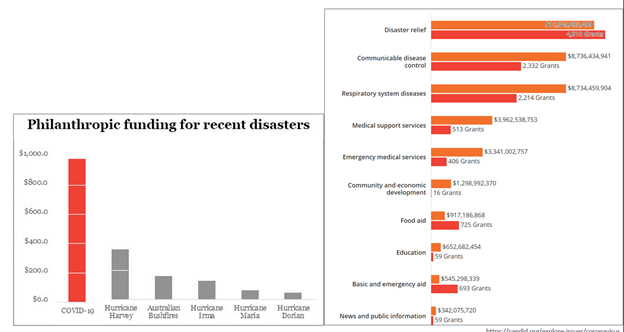The Importance of Resilient Grantmaking Technology Focused on Human-Centered Design

Humans are adaptable and organizations strive to be adaptable. Organizations often will identify the change that is needed, rally their people around that change, and once that change happens, everything returns to the way it was. Boston Consulting Group’s, Jim Hemerling and his colleagues suggest that companies need to be “always-on” to prevent this cycle of reverting back to the way things were. Companies should be ready for change and flexible enough to implement change, again and again. In their book, Beyond Great: Nine Strategies for Thriving in an Era of Social Tension, Economic Nationalism, and Technological Revolution, Hemerling and his co-authors emphasize that companies need to be “always-on.” Companies should be ready for change and flexible enough to implement change, again and again.
Grantmaking organizations are often not as adept to rapid change. Many are founded on solving long- standing issues and they get into a cycle of awarding grants to the same organizations year after year. According to a recent Payscale.com report, many of the staff of grantmaking organizations have been in their jobs for over a decade.
With all of this stagnation in the philanthropic giving world, how did the sector change their giving patterns rapidly to shift grant focus and give to COVID-19 relief in larger numbers than any other disaster? Remember above where we talked about rallying around a single change? We can all change once, but how does the philanthropic sector become “always-on”?
The chart below from Candid.org, shows that disaster relief is not new, but often times the organizations that focus on disaster relief can rally quickly. The unique aspect of 2020 is that not only did disaster relief organizations give to COVID-19 relief, but also organizations with a wide variety of missions changed their focus to giving.

Looking forward to 2021 and beyond, the philanthropic sector is going to be charged with needing to be flexible, agile and resilient, again and again. The goal for 2021 is not for things to return to the way they used to be, but for us to continue forward to make the world better than the way it was prior to the pandemic.
Below are five key ways that your philanthropic organization can be “always-on”.
- Make sure that you are putting your people first. As Sam Caplan states in his recent buyers’ guide, “Technology exists to serve people — to help them achieve their goals, work more effectively, and encourage their creativity.” Putting people first means that they are able to access information from anywhere, on any device and on any browser. Human-centered technology design should also be flexible enough to work the way that your people prefer to work. Changing workflow patterns that people enjoy is nearly impossible, not just within the philanthropic sector but in every aspect of life. For example, people know that if they change their habits and lifestyle, they would be healthier, but they continue unhealthy habits. Technology should not only benefit the people who are using it, but also be designed in a way that people want to use it.
- Count all of the people. Making sure to remember and count all of the people who interact with your foundation is key. All of the people impacted by change are the philanthropic organization’s employees and the people that are served by the organization, the “stakeholders.” These people include the applicants who will be receiving funds and who are interacting with your organization on a regular basis. You want to make sure that you are focused on them, before they become your grantees and after they are become a partner. Keep in mind that your board members need to be counted. Scott Umbel said in a recent webinar that his reviewers were happier this year than they had been in the past six years of service. The technology that his multiple review committees used this year was human centered and focused on design elements that simplified the process. You will also have internal stakeholders, auditors, finance personnel and compliance teams who are affected by change and need to be counted.
- Focus on human-centered design. Creating resiliency in your sector relies upon the foundational motivation at the base of your work. Because the workflow that your organization follows can vary greatly from one office to another, it is important to have human-centered design at the base of your work. Take a step back from counting each individual person and look at the big picture of how their roles interact. What does it take for an entire department to show the elasticity needed to be resilient? What does it look like when a department is stretched? How far can it go? And what does the department look like when it comes back?
- Stay in tune with the sector. Working in a silo might serve an immediate need, but the philanthropic sector consists of interwoven relationships and tasks that all lead to the same goal. As stated in the Blackbaud Institute’s review of the Giving 2020 report, “Though 2020 will be marked as a time of widespread change, the overarching trends in philanthropy are positive: Individuals, companies, and groups continue to invest in the causes they care about.” As a philanthropic giving organization what does this mean for you? Although the economy has seen a major shift, philanthropic giving-maintained support at an equal level. This is accomplished by not just one organization showing resiliency, but by many organizations working in tandem to maintain giving levels at the same rate as the growing need.
- You might already have what you need. It is human nature to first assume that you don’t have what you already need and hire someone new or purchase something new. Many organizations get into a continuous pattern of only using specific aspects of what they currently have and don’t utilize a person, or product’s full value. Organizations often find that an employee in the sales division who is currently unable to travel and has more time, likes writing and could help the marketing group. This “shift” may be similar to fully utilizing your technology. You may only use one portion of your system but find that it is robust enough to also handle your compliance checks and benchmarking, saving time and streamlining your entire process. Digging into what you already have is going to save you time and can add to appreciating the greater value of your organization.
Future-proof grantmaking means being resilient to the changes that might come your way. Truly future-proofing your grantmaking takes a combination of people, process and technology. Look at your grants management system vendor to make sure that they are a resilient and future-proof company. When was the last time that your vendor announced a meaningful release (quick flashy releases don’t mean that an organization is necessarily making an enhancement) Was the release a way to simply gain more money, or was it something that had the market in mind and was done for you—as an investment in you—and ideally without passing any costs on to you?
As 2021 draws near, now is the time to look towards the future and the ways in which you want your organization to be resilient and future-proof.
